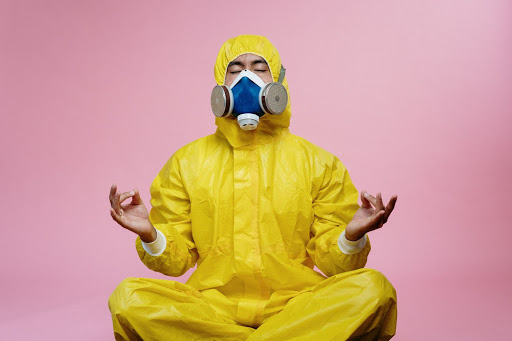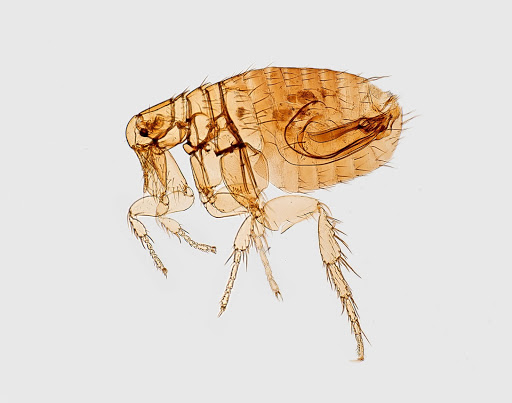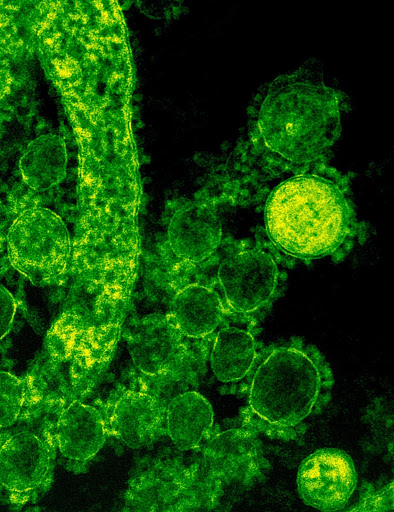
There are three different types of plague. The most common type we learn about in history class is the Bubonic plague or “black death.” The bubonic plague was named the black death because, once affected, the lymph nodes become black and swollen. The three variants “plagued” Europe for over 500 years. That is probably where we get the use of plagued to mean something awful that recurs over a long period of time. Many scientists believed the plague is spread through rodents until we learned their fleas are the real culprits. The fleas bite infected rats and jump to humans, then in the same way a mosquito gives you malaria, an infected flea could give you the plague. “It sucked me first, and now sucks thee, And in this flea our two bloods mingled be” poet John Donne wrote in the 17th century. He never got to see that he was indeed on the verge of a medical breakthrough, if only he knew about microbes and bacteria. Mortality rates for the plague when it first ravaged Europe were close to 100 percent, now with modern medicine that number is closer to 11, if treatment is sought promptly. That doesn’t make the sudden outbreak of Bubonic Plague in rodents at Lake Tahoe any less scary. Last year, a resident of the same area in South Lake Tahoe tested positive for plague. Before him, two people believed to have contracted it in Yosemite National Park. Last month, a 10-year-old girl died after contracting the plague in Colorado, but experts don’t know where she picked it up. “Medical and health professionals are trying to track down where she contracted the disease,” A local public health official from La Plata County told Durango Herald. “At this time, that is still unknown.”
How did the Rodents get the Plague?
Chipmunks in the South Lake Tahoe area tested positive for plague. This outbreak caused officials to close Kiva Beach and the Taylor Creek Visitor Center in South Lake Tahoe through Friday, August 6. It is unlikely the chipmunks had any direct interactions with people, according to the park. No statement has been made regarding the possibility of infected fleas or people. The bacterium that causes plague, Yersinia pestis, grows naturally in some parts of California, according to the California Department of Health. “Bubonic plague is naturally occurring in the Sierra Nevada Mountains and this region,” said Lisa Herron, a public affairs specialist for the agency’s Lake Tahoe basin management unit, which runs the closed facilities. “It’s something that visitors need to take precautions about, but it’s not something that they need to worry about.” She told the public that keeping pets at home, or at least on leash and away from rodent burrows, is a good way to keep out of the plague’s reach. “It’s important that individuals take precautions for themselves and their pets when outdoors, especially while walking, hiking or camping in areas where wild rodents are present,” Dr Nancy Williams, the local public health officer, said in a 2020 statement following a man being diagnosed with the bubonic plague. “Human cases of plague are extremely rare but can be very serious.”

Domestic animals can contract plague and transfer it to humans. Dogs rarely become ill, but cats can suffer a severe illness. A cat with plague will become very ill, stop eating and will have a fever. Swollen lymph nodes occur in the neck area. If a cat develops plague pneumonia, it can infect humans by coughing or sneezing. It is important to contact a veterinarian right away if you have been to an area where plague is common and your pet is showing symptoms. Stay away from chipmunks, squirrels or any other wild rodents and report any that are acting strange or lethargic to rangers immediately. El Dorado county vector control will be dusting the burrows with a powder, according to officials. The powder will basically be giving the forest a flea bath then there will be another round of trapping and testing. Officials hope the visitor sites can be opened by this weekend.
What if I believe I have the Plague?
The plague is commonly found in the western United States. Colorado, California, New Mexico, Oregon, and Arizona are where the plague is mostly found and contracted. Plague loves places that are rural with a high traffic volume, low sanitation, and large rodent populations. Take precautions, such as wearing proper clothing and insect repellent to deter fleas, when hiking in affected areas. Wear gloves when handling dead wild animals in areas where the plague could be common. The Plague’s usual incubation period is 2 to 6 days and curable when diagnosed early. Make sure to tell your doctor everywhere you have been so they can figure out if you have any of the three types of plague. Bubonic Plague is the most common plague and is usually where the illness begins.

(CDC) Bubonic plague: Patients develop sudden onset of fever, headache, chills, and weakness and one or more swollen, tender and painful lymph nodes (called buboes). This form usually results from the bite of an infected flea. The bacteria multiply in the lymph node closest to where the bacteria entered the human body. If the patient is not treated with the appropriate antibiotics, the bacteria can spread to other parts of the body.
If it is not treated in time, bubonic plague can progress to septicemic plague or pneumonic plague.
(CDC) Septicemic plague: Patients develop fever, chills, extreme weakness, abdominal pain, shock, and possibly bleeding into the skin and other organs. Skin and other tissues may turn black and die, especially on fingers, toes, and the nose. Septicemic plague can occur as the first symptom of plague, or may develop from untreated bubonic plague. This form results from bites of infected fleas or from handling an infected animal.
Pneumonic plague affects the lungs. It’s the least common variety of plague but the most dangerous. Signs and symptoms can begin within a few hours after initial infection. Catching Pneumonic Plague is rare, generally it develops as a complication of untreated Bubonic Plague, but if transmitted from person to person, it develops quicker than any other plague

(CDC) Pneumonic plague: Patients develop fever, headache, weakness, and a rapidly developing pneumonia with shortness of breath, chest pain, cough, and sometimes bloody or watery mucus. Pneumonic plague may develop from inhaling infectious droplets or may develop from untreated bubonic or septicemic plague after the bacteria spread to the lungs. The pneumonia may cause respiratory failure and shock. Pneumonic plague is the most serious form of the disease and is the only form of plague that can be spread from person to person through infectious cough droplets.
Plague is a serious illness. If you are experiencing symptoms like those listed here, seek immediate medical attention. Prompt treatment with the correct medications is critical to prevent complications. According to Mayo Clinic complications of plague may include:
Gangrene. Blood clots in the tiny blood vessels of your fingers and toes can disrupt blood flow and cause that tissue to die. The portions of your fingers and toes that have died may need to be removed (amputated).
Meningitis. plague may cause inflammation of the membranes surrounding your brain and spinal cord.
Death. Most people who receive prompt antibiotic treatment survive bubonic plague. Untreated plague has a high fatality rate.
Keep yourself safe while camping and hiking. Make sure to leave your pets at home when traveling to affected areas, or if they must come they should have flea medications already working. Experts say flea collars don’t work quick enough to deter plague ridden fleas from your pets. During the time plague ran rampant we did not know much about hygiene and the way disease spread, now we have the knowledge to keep ourselves safe if we decide to use it. Keep areas clean as possible while camping and take precautions against rodents, or other wild animals that may carry fleas. If you develop plague symptoms after visiting a possibly affected area please seek prompt medical care.
Written by: Erinn Malloy
